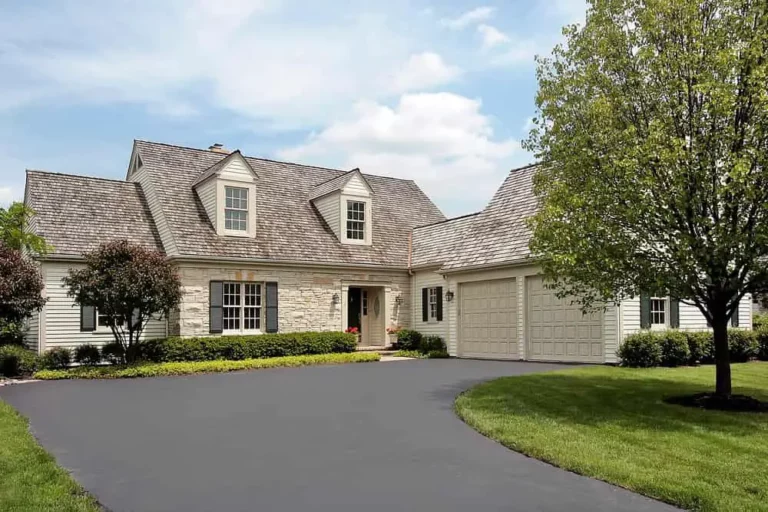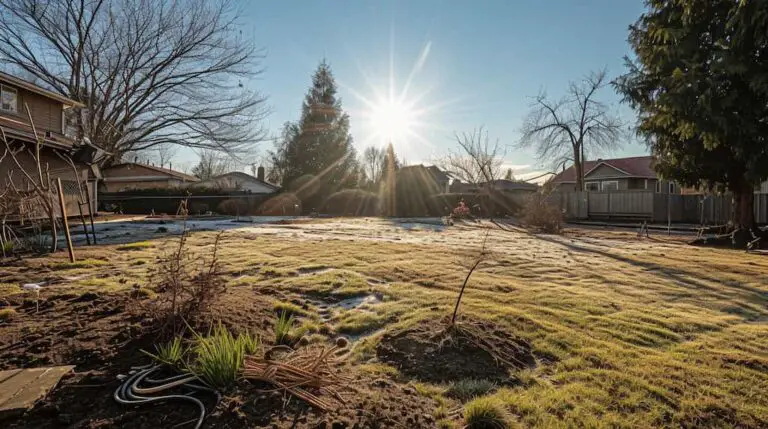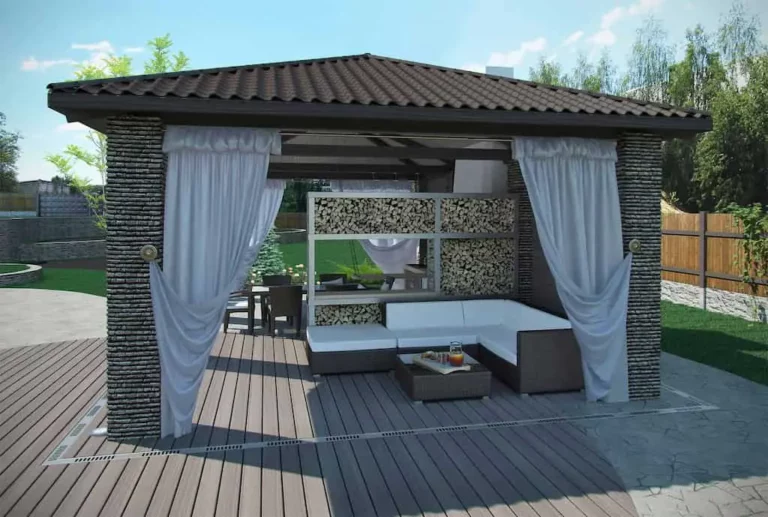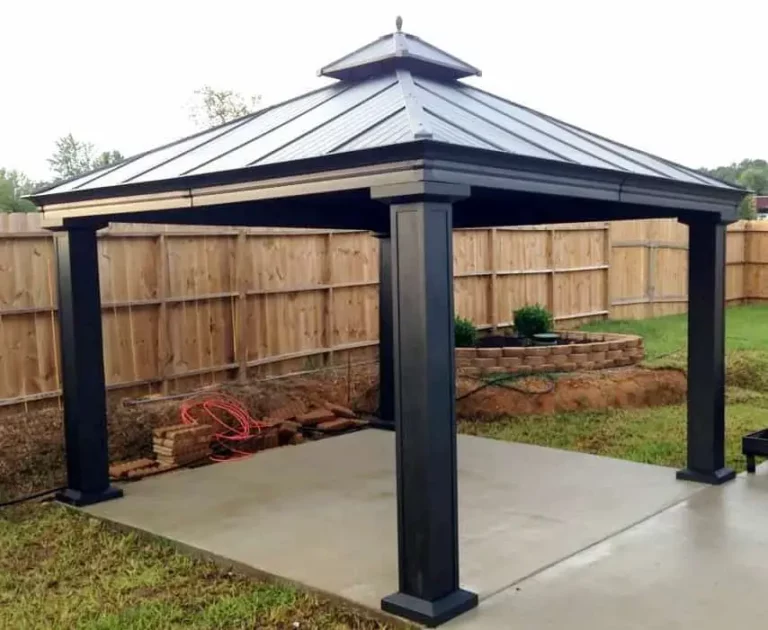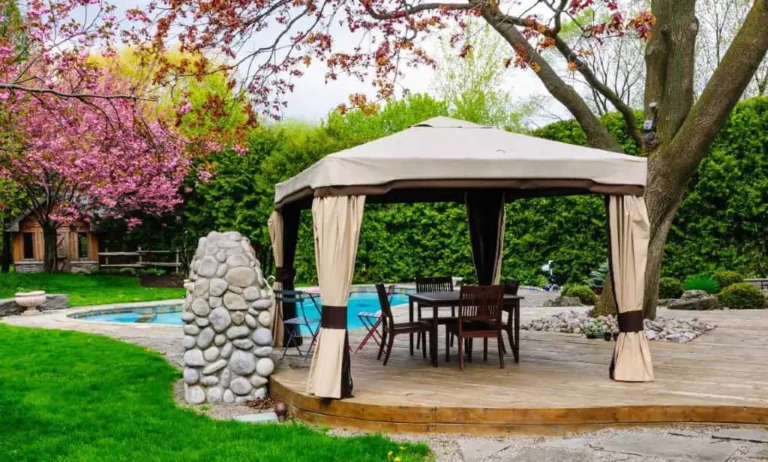How Far Does A Shed have To Be From The Fence?
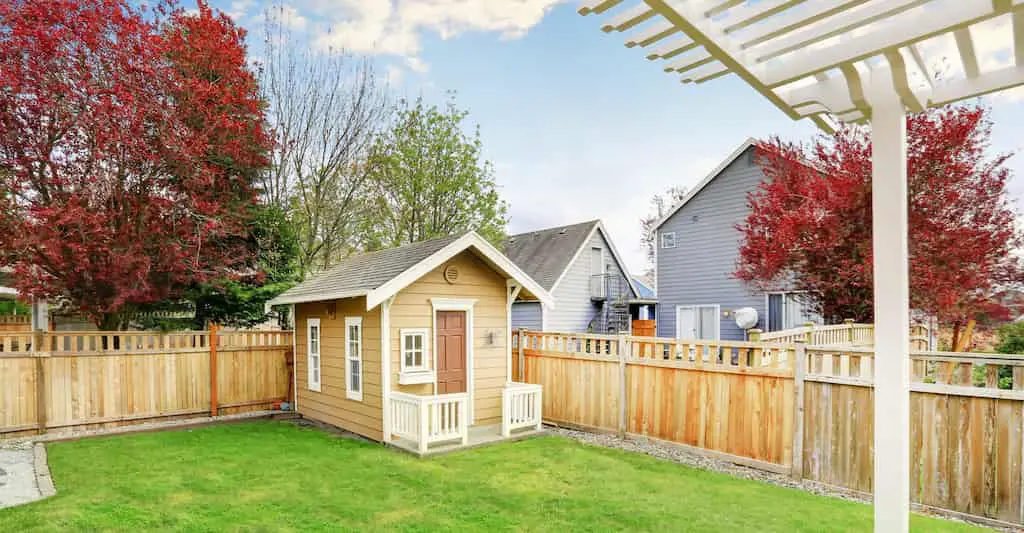
It’s essential to inquire with local zoning agencies, homeowners associations (HOA),or the covenant, conditions, and restrictions (CC&R) of your real estate deeds to investigate how far your shed can be built to your fence.
The distance between your fence and shed is determined by your local government-mandated building permits and setback requirements. These mandates are instructed by International Building Codes (IBC), nationally recognized. Homeowner associations are also responsible for the shed fence distance.
The process of acquiring a building permit involves having your property surveyed to investigate the feasibility of your shed building plan. It’s always a good idea todraw and present an outline of your property site to your local administration or HOA. The draft will guarantee that your shed complies with all zoning requirements.
How Far from A Fence Can A Shed Be Built?
The fence shed distance is contingent on a handful of features, like the zoning requirements specific to your region,the property lineconcerning the wall or fence, the setback requirements,the width of your lawnmower, and your neighbor’s consent.Some local areasstipulate zero-lot-line requirements.
Local ordinances determine residential setback requirements.Setbacks discussed further and briefly defined here are the legally mandated distances a homeowner can build and develop their property (including outbuildings like sheds)from their property line or boundary.Setbacks can vary from three to 20 ft from a homeowner’s fence.
Boundary fences or division fences between two properties must adhere to fencing laws established by local zoning directivesor the covenants, conditions, and restrictions (CC&R).Both property owners own this dividing line or boundary line.Thereby inquiring with your neighbor is a legal necessity, as well as a courtesy.
CC&Rs are terms and conditions that are defined by real estate documents.Unlike zoning ordinances which are government-stipulated laws, CC&Rs are established agreementsbetween private parties and property owners.
CC&Rs are covenants that structure conditions to which homeowners must comply.These conditions are limitationsthat applyto land use by the homeowner.Convents are recorded in the private real estate deeds given to a personal property owner upon purchase.
Homeowners associations(HOA)are another body that needs to be consulted before erecting a shedto receive the required directive regarding where a shed is allowed to be located.HOA isn’t in every neighborhood.However, if you belong toan HOA, ensure to inquire about the correct distance between a fence and shed.
Homeowners Association Requirements For Building A Shed
If you live in a neighborhood administered by an HOA, ensure that your shed meets the requirements that all property owners must follow before you begin your shed’s construction.Usually, HOA requires about 10 to 15 feet between shed and fence.
To receive anHOA verification for your shed, you must first present a drawing of a scaled site of your plan.You can hire a property evaluator to outline the extent of your property, determine your property lines and assist in the placement of your shed.The evaluator can also explain potential issues facing your shed construction- like environmental concerns or underground cables.
Drafting a scaled site plan assists in discovering whether your shed complies with the building and zoning codesand HOA.Drawing a scaled site plan is an essential process of building your shed, even if a building permit isn’t required.
Your local homeowner’s association will have guidelines that delineate the maximum dimensions of your shed.Your property site determines the total footprint of your shed.Usually, the HOA permits individual sheds to cover 1% of the property site.
The HOA provisions also regulate height.Typically, HOA has stricter rules and guidelines on the height of your shed than city councils.Size is determined by overhead powerlines and the vertical length of a fence.Height could obstruct a neighbor’snatural light on their property or view beyond their property.
If you don’t belong to an HOA, every municipalityhaszoning ordinances that directwhere a property’soutbuildingscan be built how far from a fence.Restrictions governed by zoning laws determine outbuildings’ size, use, location, and setbacks requirements.
The Residential Code-Required Setback Requirements
All property owners must comply with numerous stipulations regarding additional buildings on their site.A setback is the minimum stipulated distance where a building must be setback from a boundary or property line.
City councils or local administrations establish setbacks through zoning restrictions, ordinances, and building codes.Setbacks serve an essential role.Setback lines can prohibit varying structures like utility boxes, outbuildings, and fences, depending on the jurisdiction. Therefore, always check to see if it’s permissible.
What Are Setback Requirements?
Setback requirements are the regulated distance from a property line to erected structures (houses and outbuildings) on private property.These setback distances are implemented to help guarantee security, privacy, environmental considerations, and aesthetic appeal.
A shed is regarded as an accessory structure like an outbuilding.Exact setback distances to erect an accessory structure vary from property to property.Setback provisions are put in place to protect your neighbor’s property and your property.
A Building Permit for A Shed
Various aspects determine why a building permit is required.A building permit safeguards your property by investigating several features involved in shed making. These aspects include electricity, wiring, internet, Wi-Fi cables, location, weather, and intended use.
Your shed could pose a problem concerning its distance from your fence, and you may be unaware of the potential issues your shed poses.A building permit will ensure expertsurveillance of your lot. The investigation willreveal the proper distance of your shed from your fence.
The Reasons Why You Need A Building Permit For A Shed
Mainly, there are three reasons why you need a building permit.Firstly, your local government will want to ensure that your shed is built to the required form.Your shed could collapse, sink or blow over.A government inspector will indicate what your shed needs to fulfill its requirements.
Secondly, the proposed building site needs official government approval, as the area could be over a septic system, underground piping, or infringing on private property.Finally, if you build a shed without the required permit, the government has the power to move or break down the shed.
Zoning and Building Codesthat Regulate Shed Building
Before erectingyour shed, you must apply for a building permit.A building permit is an official, government-approved document that provides permission to develop your property.When contacting your local government agency, bring a copy of your property site plan.
A building permit is administered differently by each state, district, and region.You can receive a building permit by contacting your localgovernment administration, andeach town hasunique building codes.
However, there are nationally mandated International Building Codes (IBC).The International Code Council (ICC) is an organization that promotes the mandates of the IBC and the International Residential Code (IRC).
The IBC and IRC stipulations are the prerequisites that inform most local procedures on residential development.However, not all areas abide by the ICC.That is why it’sessential to query with your local agency to determine how far your shed can be from your fence.
Building Your Shed According to International Building Code
All local governing codes are constructed by the IBC, nationally recognized.However, some regions have local amendments that promote stricter limitations on erecting outbuildings on private property.
A division of IBC protocol stipulates in section 105.2 the permission of property owners to construct one separate accessory structure or outbuilding without a building permit.The accessory structure is mandated to adhere to a size of no more than 120 ft.
As mentioned above,the IBC does have more stringentspecifications, as in some areas, their local codes insist that sheds larger than 60 ft receive a permit.While in other regions, all homeowners are to inquire with local agencies to construct an outbuilding.
Conclusion
Your local zoning bureau determines the distance between a shed and a fence.Various regions have zero-lot-line requirements, and others have three ft to 20 ft setback requirements.You must query with your local government, homeowner’s associations, or historic preservation district. Be sure to check with your neighbors, as you both own the boundary line.
Constructing a shed requires a building permit. A building permit is a government-approved document that permits the construction of your shed.Acquiring a building permit is essential for numerous reasons as it safeguards the integrity of your property and the structure of your shed. Laws that mandate property development and setback are determined by the ICC, IBC, and IRC.
